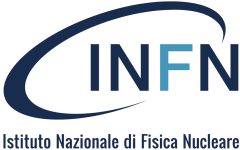On June 4 we will have a seminar by
Nathan Seiberg (IAS Princeton)
Title: Continuum Quantum Field Theories for Fractons
Abstract: Starting with a lattice system at short distances, its long-distance behavior is captured by a continuum Quantum Field Theory (QFT). This description is universal, i.e. it is independent of most of the details of the microscopic system. Surprisingly, certain recently discovered lattice systems, and in particular models of fractons, seem to violate this general dogma. Motivated by this apparent contradiction, we will present exotic continuum QFTs that describe these systems. This talk will have a different emphasis than previous talks with the same title and abstract.
Meeting information:
4th of June at 14:30 Italian Time
Zoom Meeting https://zoom.us/j/198435430
Slides are available at
https://pandora.infn.it/public/c15d10
You can watch the recording at
https://pandora.infn.it/public/7e4c79
